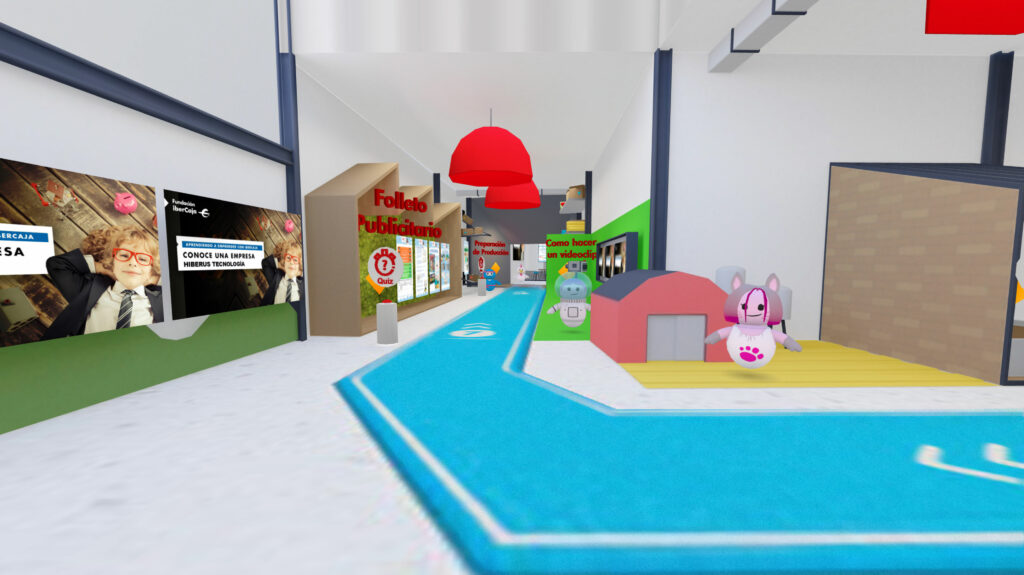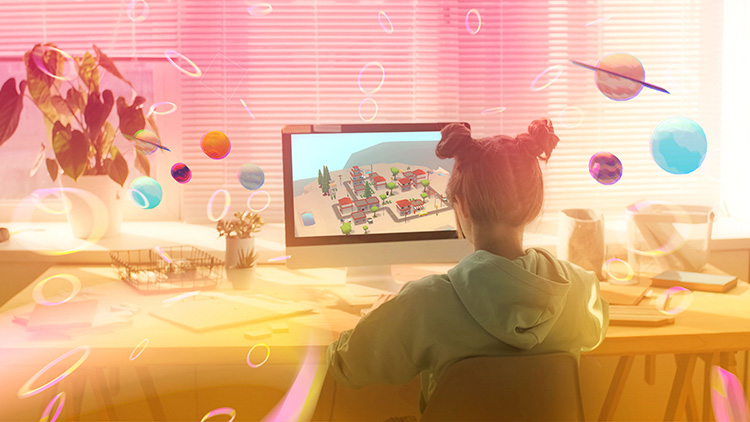What is Virtual Training?
The Virtual Training represents all the learning experiences that take advantage of the latest innovations in the Web3 and the technologies of the Metaverse y Virtual Realityfor the dissemination of knowledge among users/students at different educational levels. A whole series of solutions that make it possible to recreate spaces and situations that promote the immersionthe motivation and the student autonomyby being themselves an active part of their training. Thus facilitating the development of key skills for both students and professionals through attractive, enjoyable, gamified and immersive training.
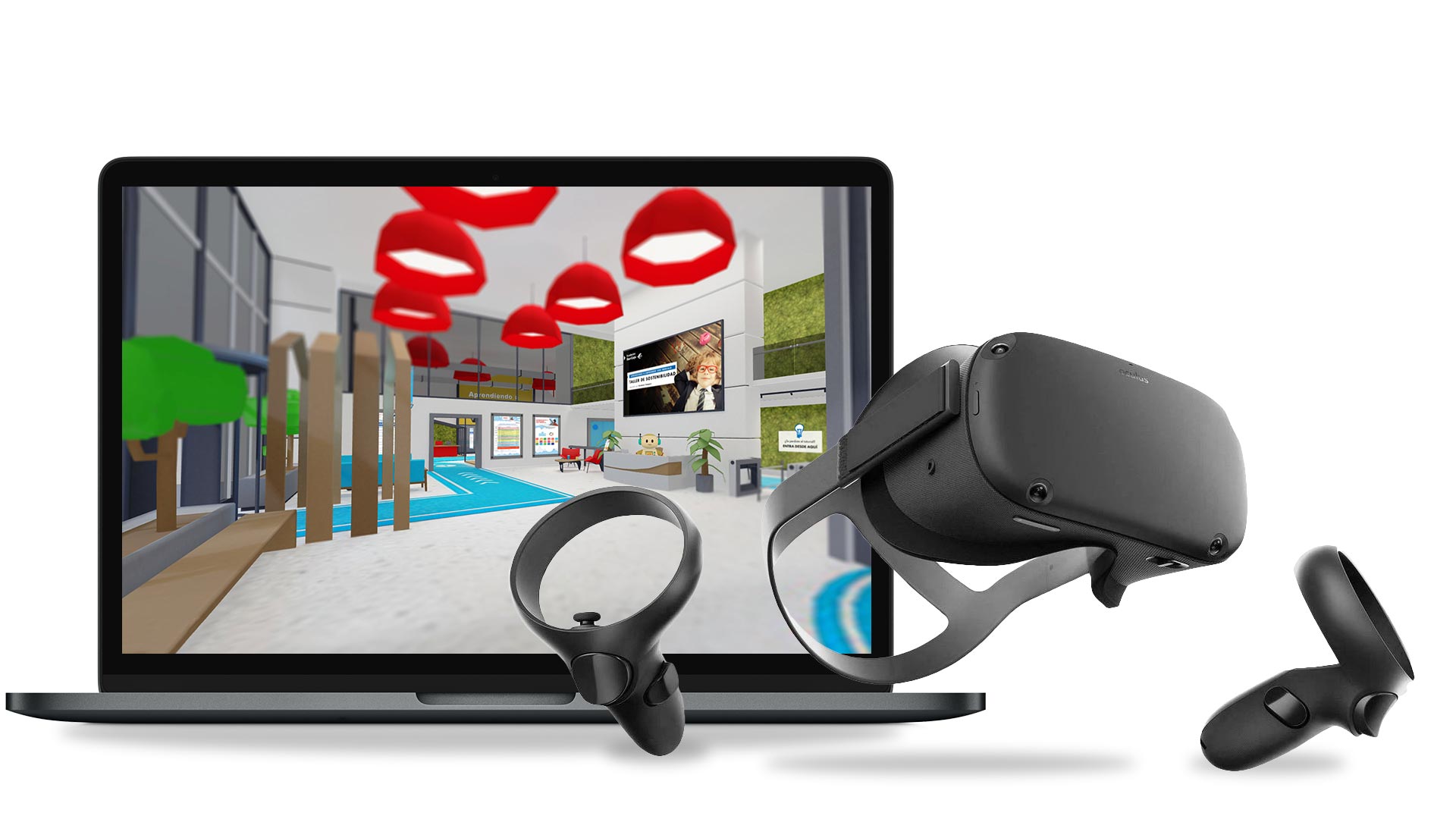
Examples of projects based on Virtual Training
Virtual Training Applications
Application in the education sector
At a more scholastic and academic level, the Virtual Training offers the possibility of going beyond conventional classes to turn the subjects into real educational video games that awaken the curiosity and the desire to learn of the new generations. All this with the development of interactive virtual campuses and collaborative projects that, in an active and personalized way, transfer the students to different 3D worlds dedicated to nature, history, science, etc. Technological solutions that also provide greater support to teachers in the academic monitoring of their students by offering a immediate feedback and a greater control on the contents. An example of this type of virtual training program, especially dedicated to children, is Learning to undertake. A virtual campus developed together with Ibercaja Foundation to bring the business world to the classroom through a gamified experience close to video games.
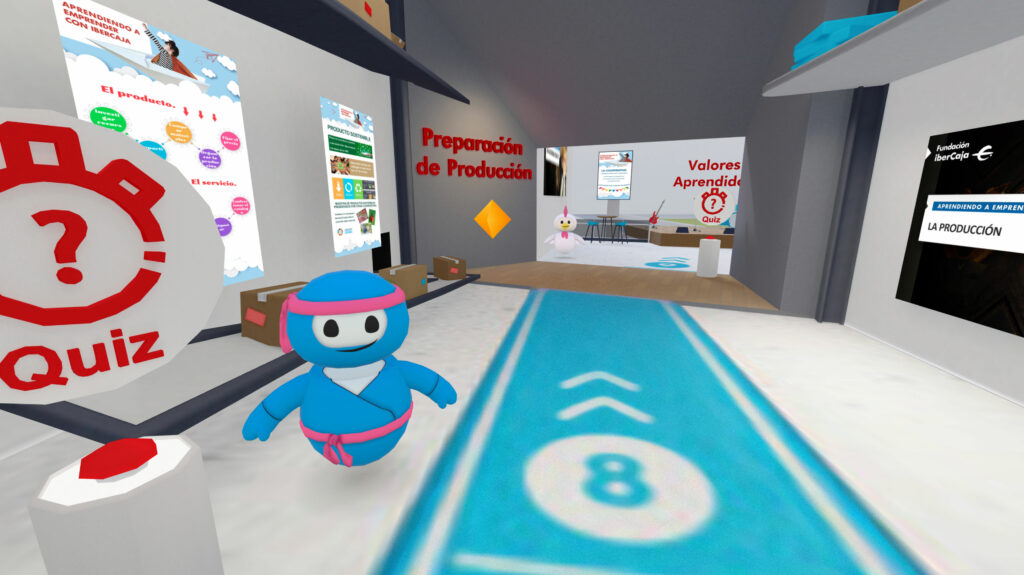
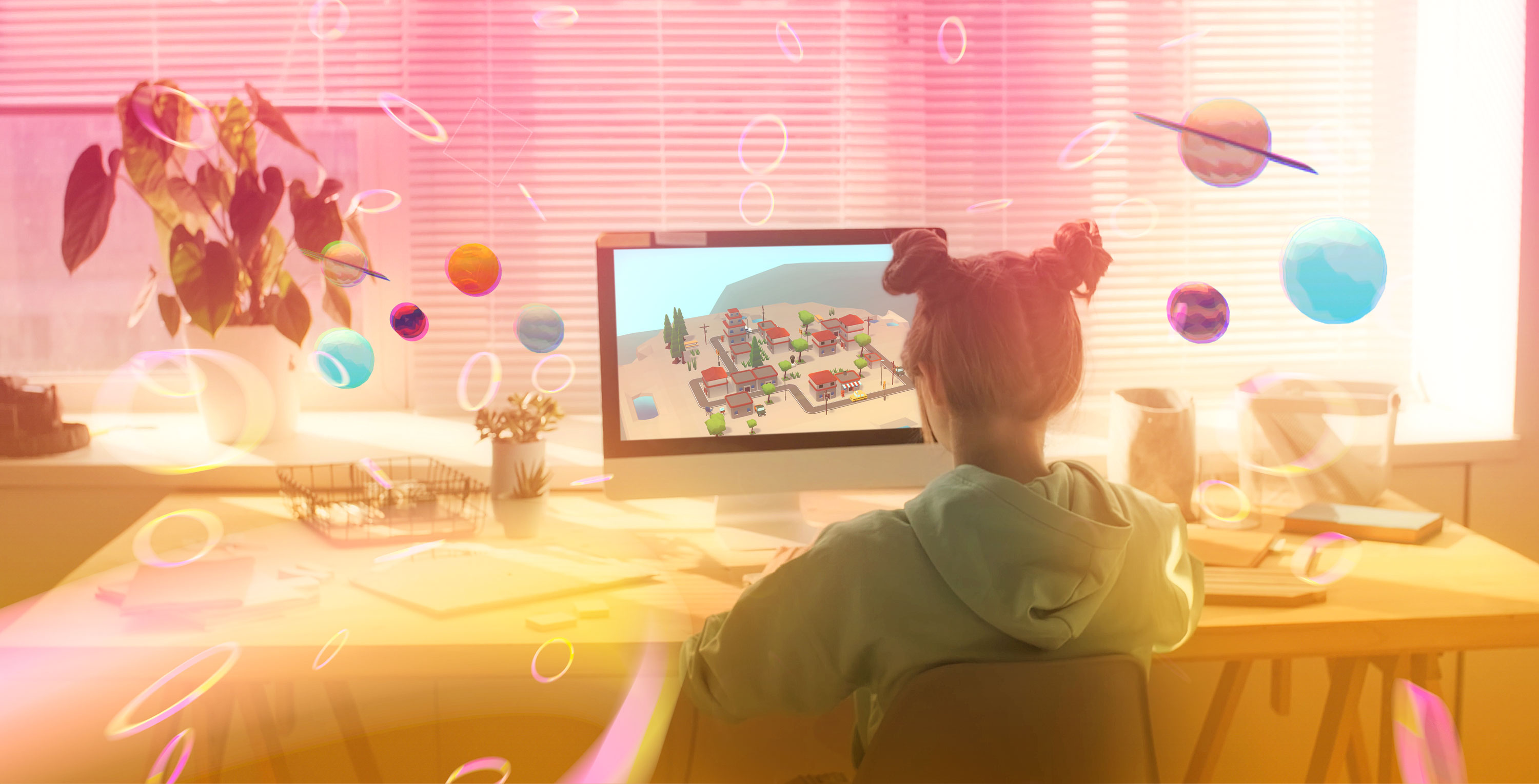
2. Application in the business and industry 4.0 sector.
The Virtual Training more than ever before, companies and their employees need to put into practice the learning by doing (learning by doing) with learning-by-doing programs in Web3 more entertaining than traditional instruction manuals. Where training courses borrow from the most characteristic aspects of the video games so that workers can explore, test and learn at their own pace within the virtual simulations, while interacting with all of the 3D models of the different machines and among themselves through their own avatars. Interactive training programs that are always available and can be accessed from different devices and browsers. In this way, the training is customized thanks to the unique combination of technology and entertainment, recreating all kinds of professional training processes. Such as the presentation through 3D models of the latest machinery of the industrial group. Tapewormsavailable at any time on its own internal website.
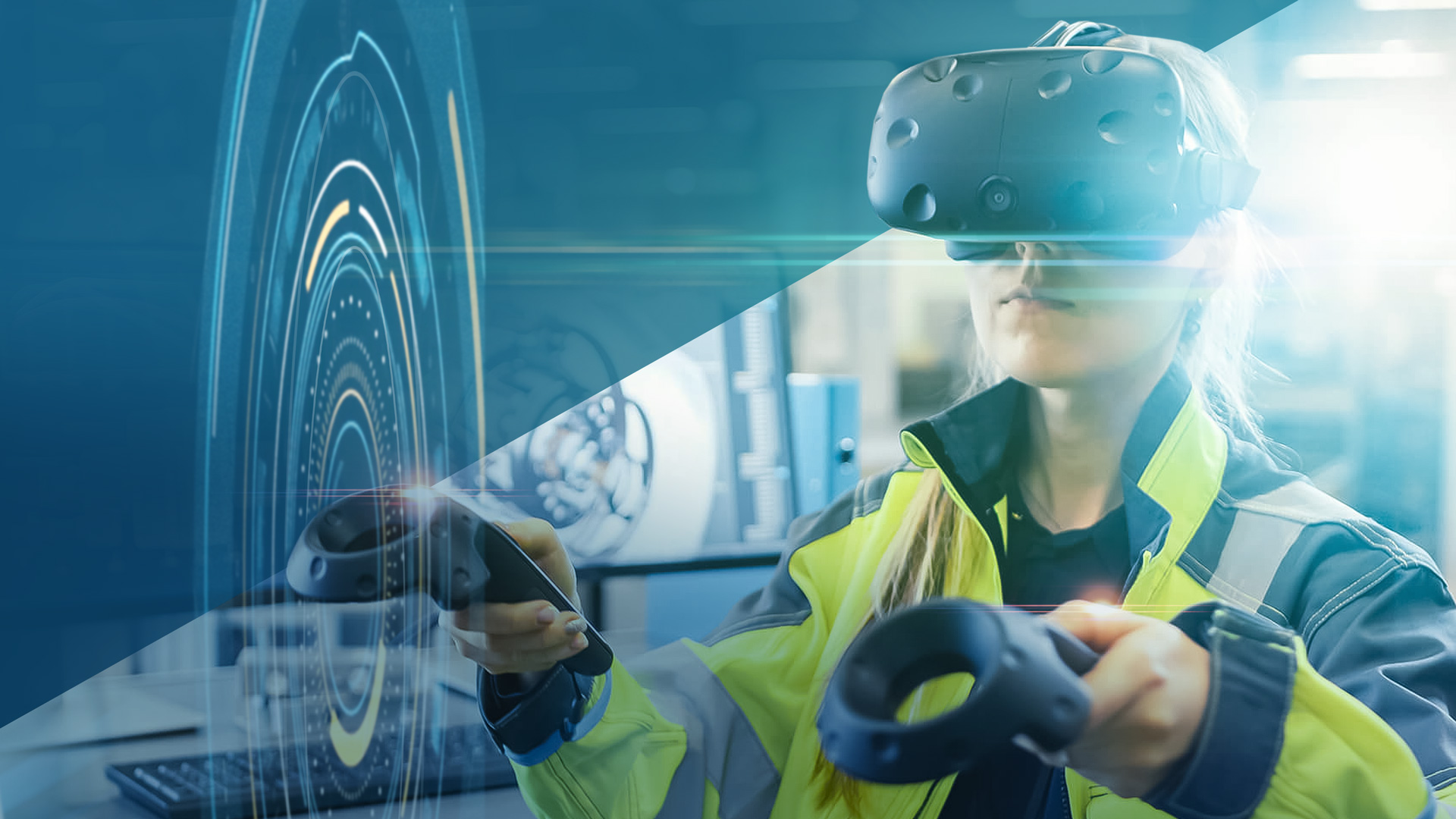
3. Marketing and advertising applications
Nowadays, simply advertising the product or service is not enough to convince the target audience. Customers no longer look only at the characteristics of the products/services, but also at the values that the company conveys, its level of expertise and, above all, its position as an expert in the sector that can provide them with unique knowledge on the subject. Thus, training is becoming one of the most important more effective and differentiating marketing strategieswhere the brand launches a series of learning sessions around the company and products that enrich the relationship with customers and brand positioning. These trainings can be carried out in person with a small group (with a high cost in the organization and preparation of the trainings) or in your company. large-scale digital version, taking advantage of the latest advances in immersive technologies with the development of a own virtual campus. Campus where the content is always available and the company knows at the moment all the movements of customers within the space. At the same time facilitating the interaction, participation y gamification of the actions of all users. An example of Virtual Training integrated into a marketing campaign can be found in the gamified experience of the Rafa Nadal Academy by Movistar in the virtual universe. Where visitors, in addition to knowing all the facilities, discover through quizzes y mini-games the values of the academy and the contents of the classroom courses.

4. Applications in the tourism and cultural sector
Undoubtedly, one of the main objectives of museums is the dissemination of knowledge about history, science and art. An educational work that benefits from the development of experiences of Virtual Trainingwhere the visitor actively participates in his or her own knowledge gathering. Virtual Training also offers the possibility of creating virtual rooms where people from all over the world can enter and learn all the details of the exhibition. All through experiences eye-catching, pleasant y different that encourage curiosity and allow future visitors to get to know the work in advance so that they can enjoy it in person. One of the most important proposals at the European level can be found in the educational project Virtual Reality for Youth Skills. A Virtua Reality platforml that brings together four European museums in a single didactic space to learn about the works and artists in their rooms in a different way.
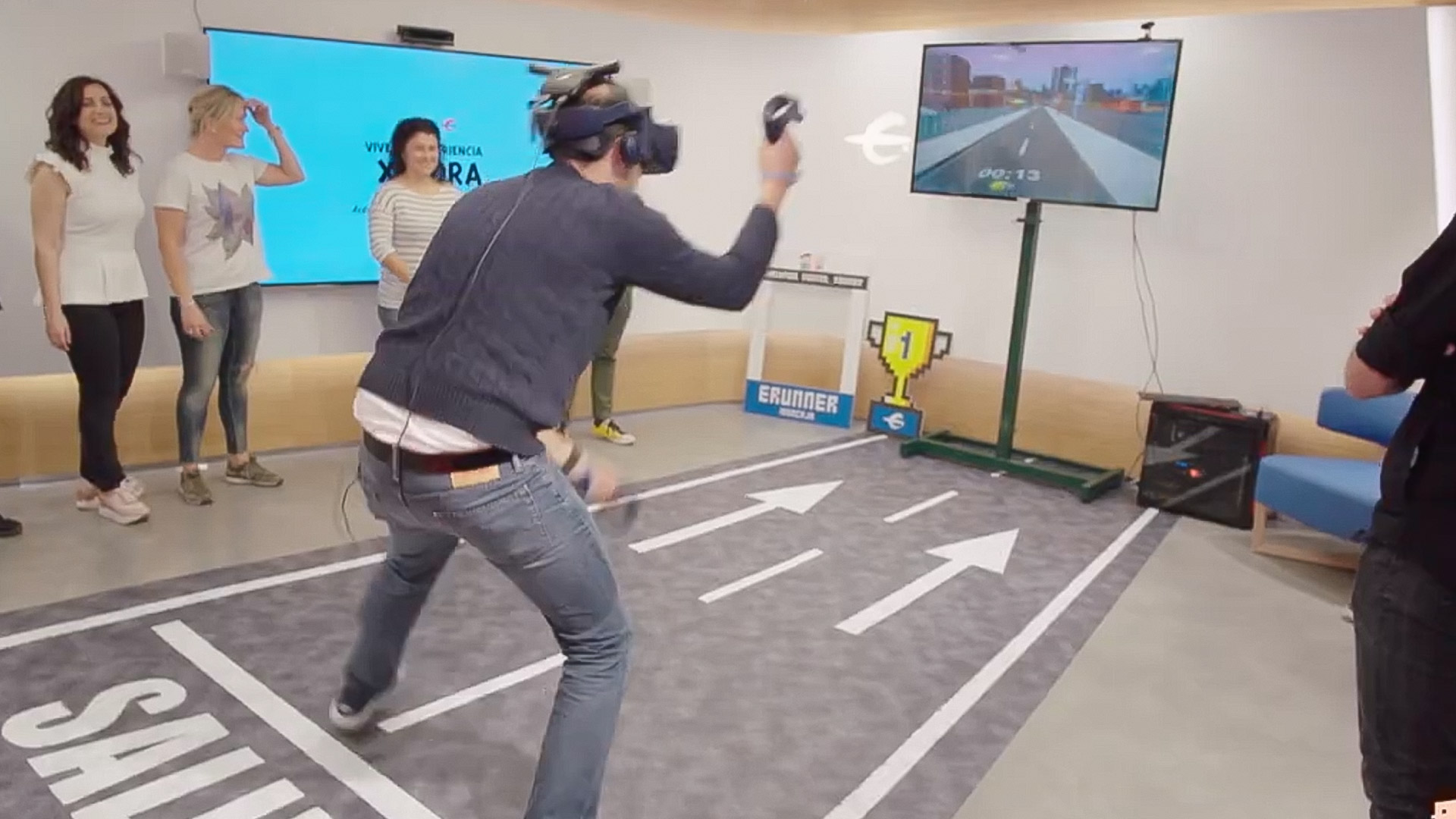
5. Applications in the sector health sector
If there is a sector where the training and the practical experience are important factors for good job performance in the health sector. The Virtual Training allow you to deepen key skills within the medical world with the development of 3D simulations y role-plays where healthcare professionals can familiarize themselves with all the processes before carrying them out in the real world. In addition, these web spaces can be set up as large virtual campuses, accessible from anywhere on the planet, to study in detail from diseases and the human body to the surgical equipment of the hospital center thanks to the development of interactive 3D models. Patients also benefit from the development of these virtual trainings, where healthcare professionals are able to prepare them and their families for the situations they will face in life outside the healthcare center. Making the adaptation process much more naturalThis gives patients confidence, as they are already familiar with this new situation.
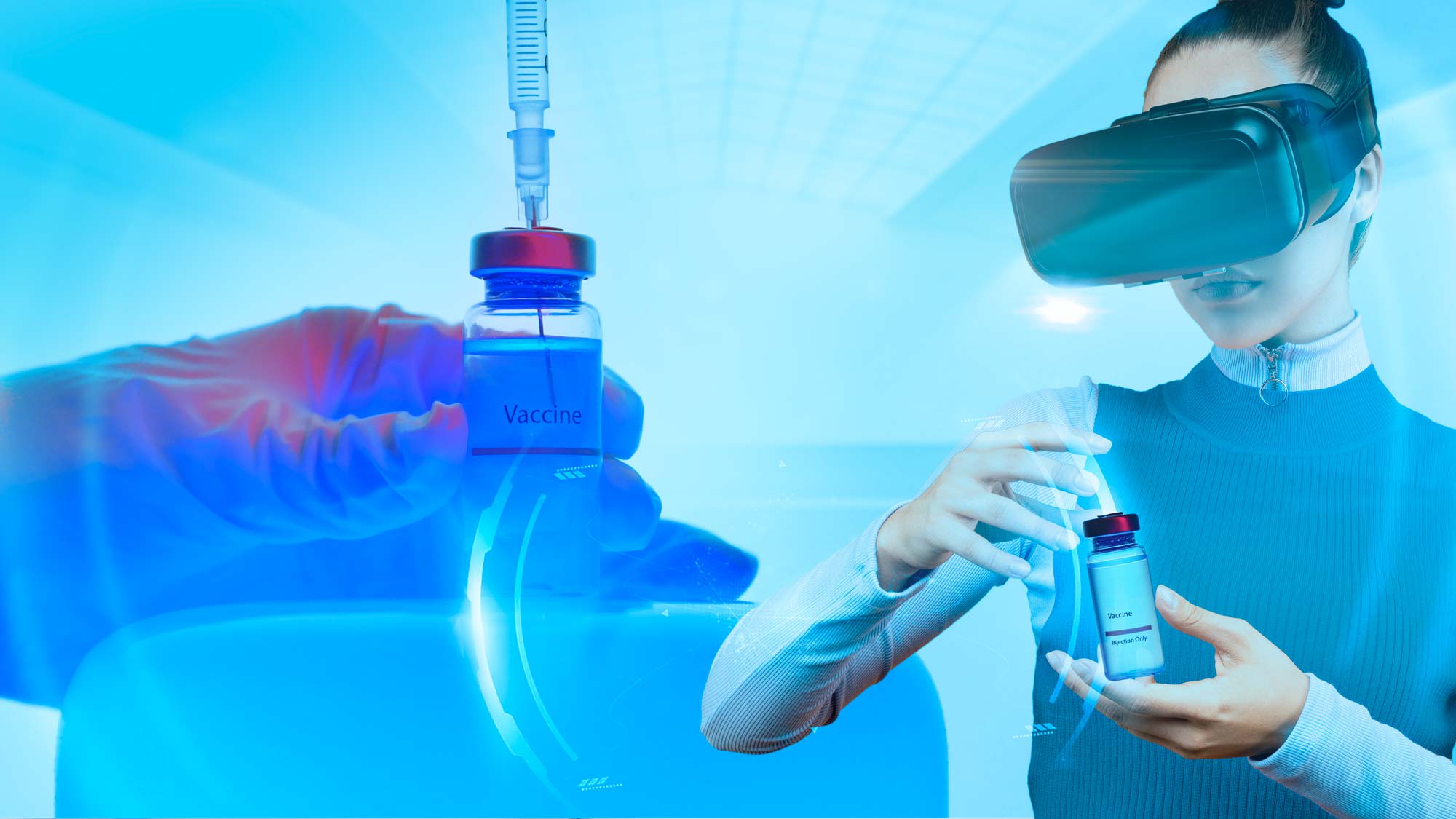
Advantages of Virtual Training

- Personalized and practical learning
Virtual training allows the learner to play a key role in the more active role in their training and at the same time deepen the practical knowledge. In addition, training through virtual recreations allows to increase the self-confidence of the students in being able to learn without fear of failure due to the consequences. Exploring, comparing and learning from the different situations that they will later face in the real world, knowing how to manage without problems, having "lived" them beforehand.

- Immersion in training
Upon entering these campuses and virtual worlds ltudents/users discover training programs that go beyond traditional classes. Thanks to the development of different challenges y missions, virtual learning programs capture all the attention of students. Improving their involvement and nurturing their curiosity to explore different formative worlds. without distractions.

- Gamification of learning
In e-Learning, educational programs borrow aspects of the video games to make the learning experience more enjoyable. At the same time, this virtual gamification allows trainers to control and monitor in a personalized way all the actions that trainees can perform within the space, making the tracking be much more precise y direct.
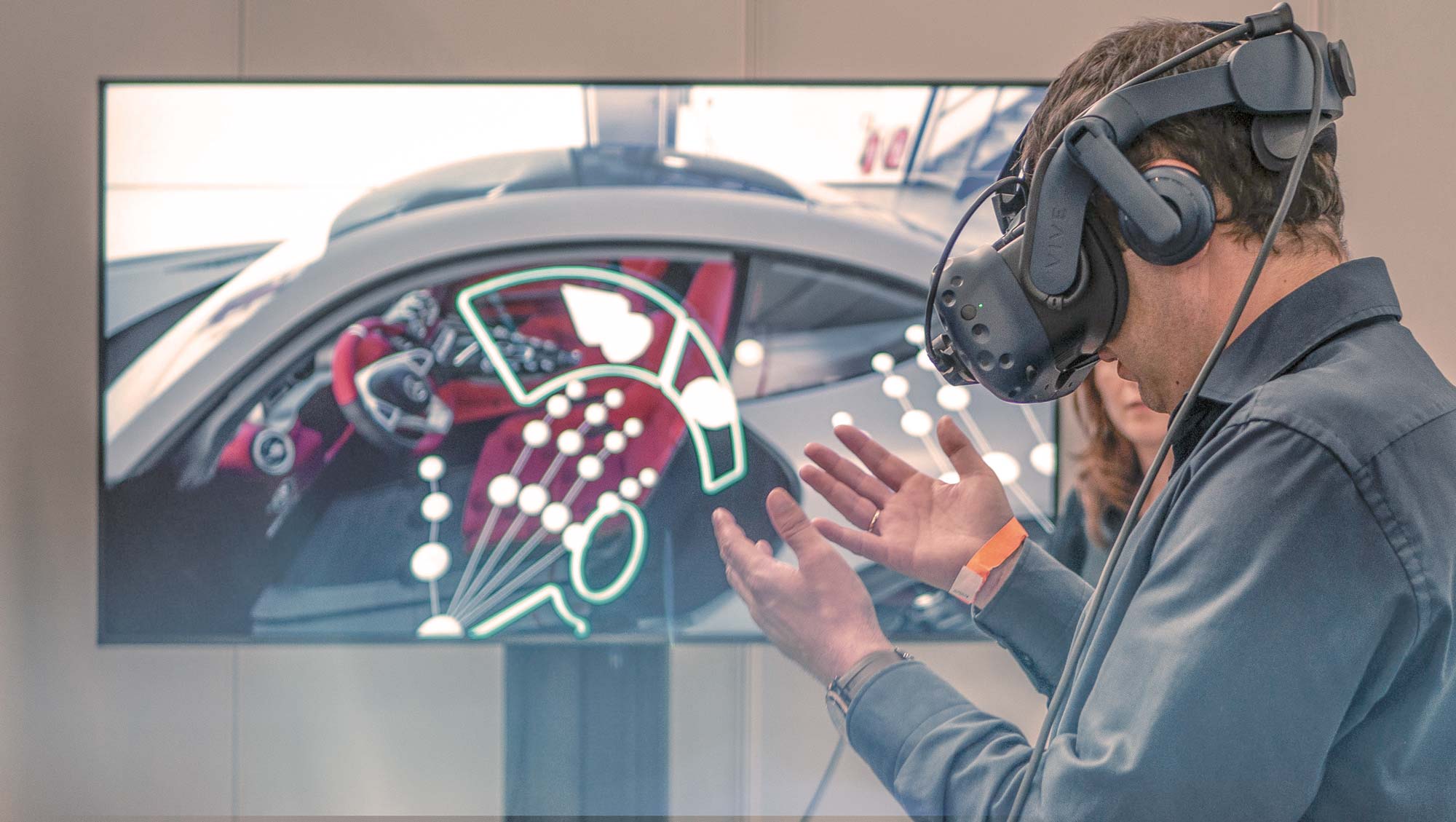
- Reduce training time and costs
Virtual Training offers an education of high quality while reduces costs y times. Simplify logistics when it comes to organizing both in-company learning processes and more open and multitudinous training, as it does not require the rental of large spaces or the physical presence of trainers. In addition, e-learning facilitates the dissemination of knowledge of great interest by eliminating the distance barriers and at the same time increasing the interaction, integration y communication among the participants.
"We need technology in every classroom and in the hands of every student and every teacher, because it is the pen and paper of our time and it is the lens through which we experience so much of our world."
- David Warlick / Expert in Educational Innovation -


